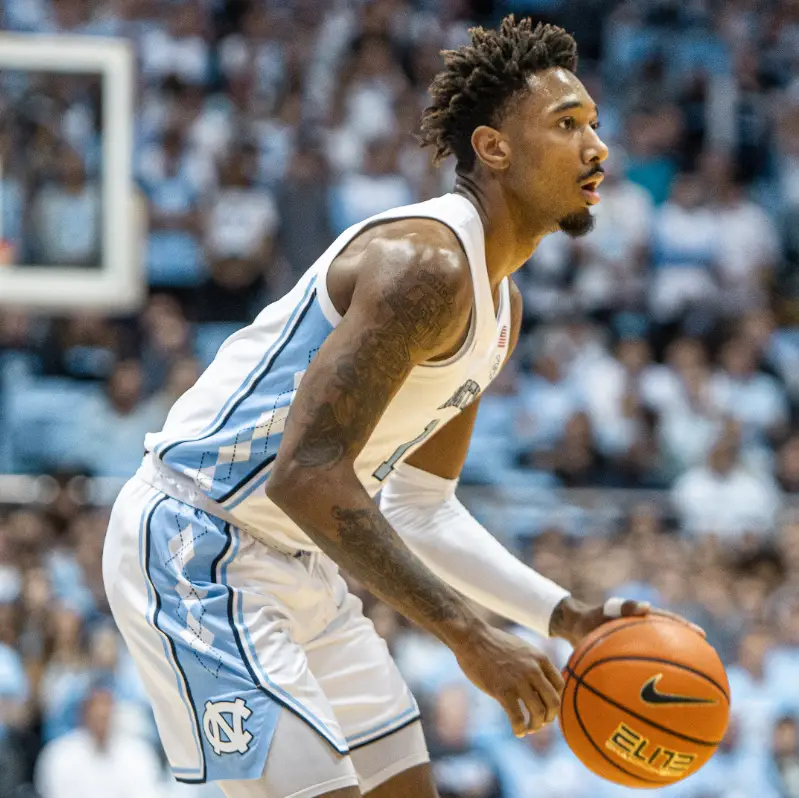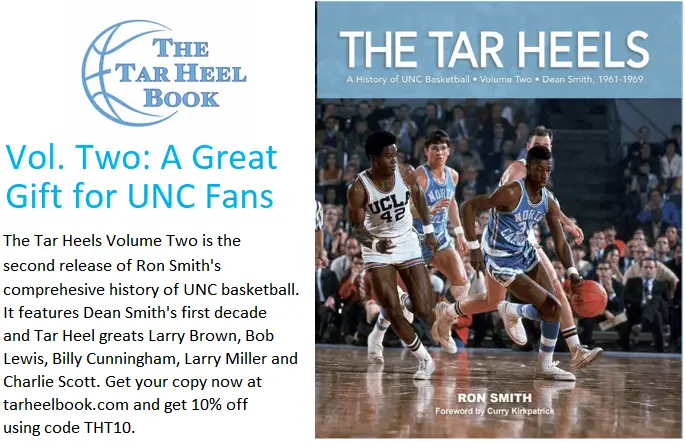By Doc Kennedy
Well, that didn’t last long.
After arguably their best performance of the season on Saturday against Clemson, UNC came out and gave 19th-ranked Miami a great run for a half, before the old bugaboos made a return, and the Tar Heels missed a big chance to put a good win on the resume, falling 80-72 to the Hurricanes at the Smith Center.
You can read R.L.’s Bynum’s game story here, but the long and short of it is, as UNC has found out over and over again, bad things happen when you can’t knock down shots. Carolina shot an anemic 5 of 31 for the game, with many of those 31 being good looks, and quite a few wide-open.
UNC’s paltry outside shooting allowed a veteran, well-coached Miami team to collapse off the shooters not named Caleb Love or R.J. Davis, choking out Armando Bacot inside. And in the second half, when the Heels could not get the ball inside or drive the lane like they were earlier in the game, the poor decisions and poor shot selection that have plagued Carolina all year came flooding back. After going 6–1 in January, UNC is now 1–4 in February, and the margin of error for making the NCAA tournament is practically non-existent.
With that in mind, here is a back-to-the-bubble edition of the Good, Bad, and Ugly Report:
Good
Leaky Black
The fifth-year senior just missed his second career double-double, posting 13 points and 9 rebounds. Perhaps more important was his defense on Miami’s leading scorer Isaiah Wong, holding the all-everything guard to just 10 points on 3 of 8 shooting. This is the second straight game where Black has contributed on offense while playing lockdown defense.
UNC’s 2-point shooting
The Tar Heels shot a crisp 57.1% from inside the arc, including a blistering 14-18 (77.8%) in the first half as Carolina attacked the basket for easy buckets. Even though Miami made adjustments to cut off the UNC drives in the second half, the Heels were efficient closer to the basket.
Bad
Armando Bacot
It’s rare to find the senior on this side of the ledger, but Bacot was pretty much a non-factor all night despite making all five of his true field goal attempts (not counting a forced three as the shot clock was expiring). He only scored two points in the second half and had a season-low four rebounds. The Tar Heels were able to find Bacot in the first half when Miami big man Norchad Omier went out with foul trouble, but the foul bug found Bacot in the second half and while Omier is a solid player, playing the presumptive ACC Player of the Year to essentially a draw is a net positive for Miami.
Transition scoring
It is really interesting to see how difficult it has been for the Tar Heels to score in transition this season, especially given it has been a hallmark of UNC teams forever. Carolina only scored two fast-break points. Two. That’s it. In the February losses against Pitt, Duke, and Miami, Carolina had a combined nine transition points. On Monday, much of that could be tied to the -9 rebounding margin the Heels surrendered to the Canes.

Ugly
3-point shooting
There is really only one way to describe UNC’s 3-point shooting. It’s, well, ugly. Carolina shot 5 of 31 against Miami, a cool 16.1%. The Tar Heels came into the game ranked well into the 300s in 3-point percentage nationally. Unfortunately, this is who they are, 26 games into the season. The tournament run last season helped people forget that Carolina wasn’t a great shooting team last season, either. And it’s not just that Carolina is missing shots, it’s the volume of 3s being taken when they stink from outside. In the four February losses, Carolina is shooting 23.3% from 3, while attempting nearly 40% of their shots from outside. When you shoot lots of 3s and miss lots of threes, well, that’s not a great recipe.
With the loss, UNC will have lost 10 or more games in four consecutive seasons for the first time in 70 years, a streak which led to the arrival of Frank McGuire. And now the Tar Heels find themselves firmly affixed to the bubble without a single Q1 victory (though in the silly NET rankings, beating a top-20 Miami team in Chapel Hill would not have qualified as a Q1 win). This time last year, Carolina was also finding itself the subject of bubble talk, but the biggest difference from 2022 to 2023 is that UNC has few high-quality wins (and few opportunities for Q1 wins) but no bad losses in 2023. In 2022, the Heels had a couple of Q1 wins but a couple of bad losses as well.
Ultimately, time is running out for Carolina as they head to Raleigh on Sunday to face an N.C. State team that is playing very well and is likely eager for revenge after the contentious game at the Smith Center. A victory in Raleigh would be (for now) an elusive Q1 win and, with only five games remaining in the regular season, as close to a must-win for postseason hopes as can be.
Doc Kennedy is an alum and longtime UNC fan, and a former high school and college basketball coach who wrote this report for years on Tar Heel Blog.
Photo via @UNC_Basketball



